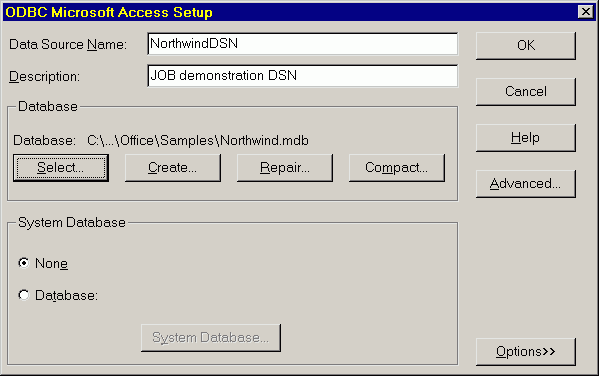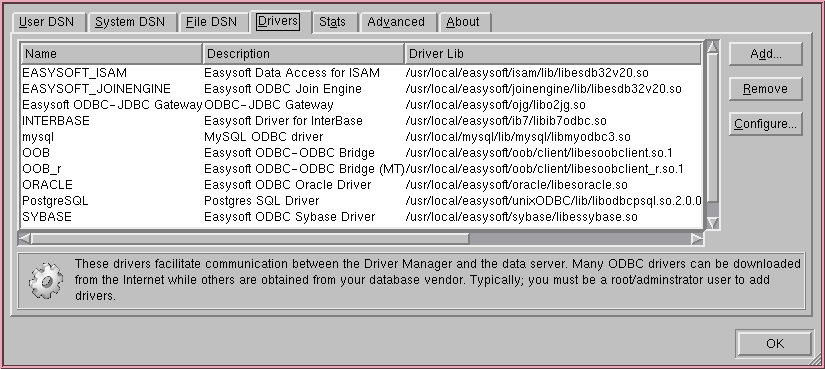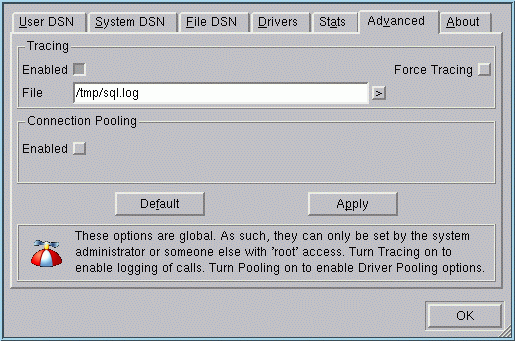

- #ACCESSING ODBC IN SELF CONTAINED HTML EXECUTABLE 64 BIT#
- #ACCESSING ODBC IN SELF CONTAINED HTML EXECUTABLE DRIVERS#
- #ACCESSING ODBC IN SELF CONTAINED HTML EXECUTABLE DRIVER#
- #ACCESSING ODBC IN SELF CONTAINED HTML EXECUTABLE FULL#
The connection can be made locally or to the Gateway located on a separate machine.
#ACCESSING ODBC IN SELF CONTAINED HTML EXECUTABLE FULL#
SQL Server treats the CData SQL Gateway as a linked SQL Server instance, so you can write full SQL queries to query your 1010data data without losing performance as would happen connecting to an ODBC data source directly. You can use SQL Linked Server to connect to the CData SQL Gateway. See the 1010data integration guides for information on connecting from other applications.
#ACCESSING ODBC IN SELF CONTAINED HTML EXECUTABLE DRIVER#
See Using the ODBC Driver (from Code) to connect to 1010data from the following programming languages and for information on the supported interfaces: See Using the ODBC Driver (from Tools) for information on using the ODBC driver in some of the popular applications and programming languages that connect via ODBC. See Getting Started to create an ODBC data source name (DSN) and connect to 1010data from your platform.
#ACCESSING ODBC IN SELF CONTAINED HTML EXECUTABLE DRIVERS#
Drivers for Windows, Linux, and macOS/OS X.Supports the Unicode ODBC APIs and ODBC 3.8.Supports 32-bit and 64-bit applications.Access, analyze, and report on data with your SQL-based tool of choice.The driver hides the complexity of accessing data and provides additional powerful security features, smart caching, batching, socket management, and more. Applications can then access 1010data as a traditional database. The driver wraps the complexity of accessing 1010data data in a standard ODBC driver compliant with ODBC 3.8. Clicking the x disconnects the ODBC connection.The ODBC Driver for 1010data 2020 enables real-time access to 1010data data, directly from any applications that support ODBC connectivity, the most widely supported interface for connecting applications with data. So, I'm happy that I can connect to the awhr DSN - a DSNless connection string can also be specified in the Connstring field - and that Sales.Currency is the table that I am interested in. In the Lianja App Builder Console Workspace, I enter awhr as the Connstring and once the connection is reported as successful, I list the tables then open the Sales.Currency table to check its structure and data.
#ACCESSING ODBC IN SELF CONTAINED HTML EXECUTABLE 64 BIT#
I've set up a system DSN called awhr in the Windows 32 bit ODBC Administrator (on 64 bit Windows, this is %windir% \SysWOW64\odbcad32.exe) to connect to the Microsoft SQL Server AdventureWorks sample database on my local machine. It's always a good idea to test out any ODBC connection you want to use in Lianja in the ODBC Console, so that you can see that the connection is being made and that you can access the tables you expect. For example, you can use virtual tables accessing Microsoft SQL Server alongside native Lianja tables, alongside other virtual tables accessing MySQL and build relationships between the data. Virtual tables allow you to join disparate data sources.All virtual table connections using the same connection string or DSN are pooled to maximize performance.Virtual tables are fully updatable with transparent inserts, updates and deletes and they are both SQL and NoSQL compatible.

This gives a clear separation between the UI presentation layer and the underlying data source. Virtual tables are an all-in-one combination of a connection, SQL commands and a CursorAdapter object, so the connection and the logic to perform a query is self-contained inside the virtual table definition.You can drag 'n' drop virtual tables in the Page Builder and reference them in the same way as standard tables and all the time the underlying connection, SQL statements and cursor adapter are being handled for you.Īll virtual table connections using the same connection string or DSN are pooled to maximize performance. Virtual tables allow you to access external data via an ODBC connection (or an OLEDB connection on Windows), yet they look like regular tables in a Lianja database. HOWTO integrate Lianja and VFP with concurrent data access.SET CONNSTR Command (default 'ODBC Connection').




 0 kommentar(er)
0 kommentar(er)
